
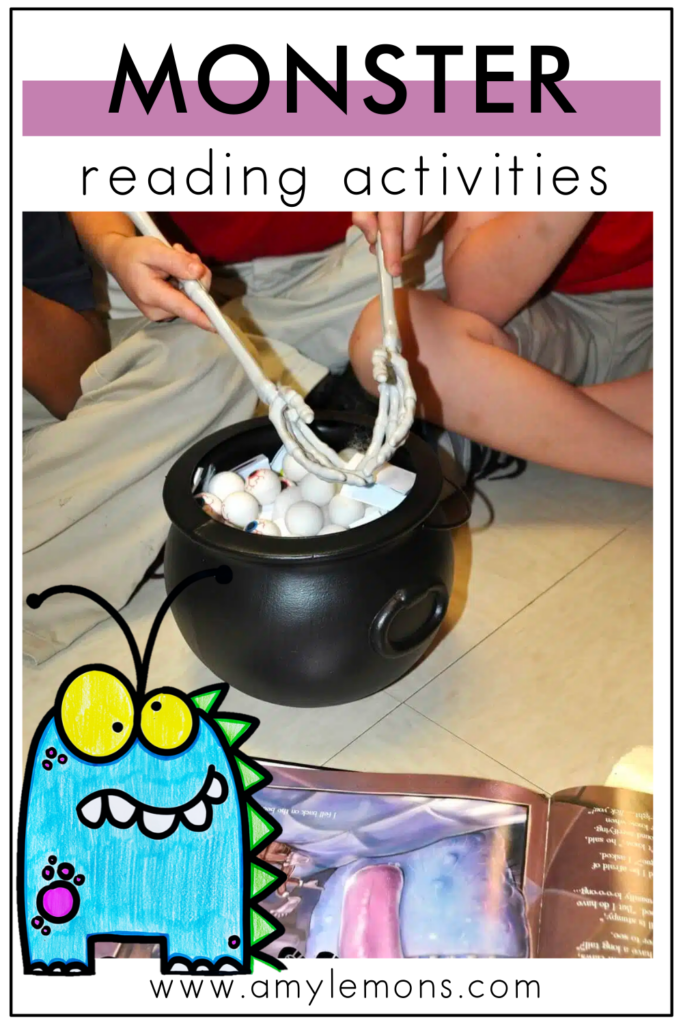

So many teachers assume that there’s no way to incorporate fun themes and still meet the rigor required for comprehension skills in the classroom. Well, I am here as a testament to say that they are so wrong. You can still tackle important skills in any subject while incorporating seasonal themes. Best of all, they keep students engaged!
Now that that’s out of the way, let’s talk about one of the best themes you can use for reading during October. Monster activities are sure to keep your students interested and ready to tackle the day!
I am an advocate for using books as anchors for reading lessons. So, the best way to bring monsters into your lessons is to grab a monster book and pair it with monster-themed ELA activities like charts, flap books, crafts, drawings, and games.
You’ve probably been through quite a few activities for identifying and analyzing character traits, feelings, and emotions, but have you ever tried it with eyeball soup?
While there won’t be any real eyeballs in this soup, students will still get a kick out of the eerie-looking cauldron of monster eyeballs looking back at them! This is an activity we’ve used many times in our 2nd grade Rooted in Reading October unit.
First, you will want to grab your favorite monster book! You can check out this list of my favorite Fall books if you need recommendations. Ideally, you’ll want a book with multiple characters but it doesn’t have to be.
Monsters are the perfect characters for talking about traits and feelings. Many of the stories tackle the stereotypes of what makes a monster, while also showing a different softer side that students will be surprised to see.
For the eyeball soup, you will need just a few items.
Use the cotton balls to create the effect of spider webs or bubbles, place the eyeball bouncy balls into the cauldron, then add folded character trait strips in between the layers.
Next, have your students stir around for character traits in the eyeball soup.
When they scoop out a piece of paper, they can unfold it and show it to the class. Once students have scooped a character trait, as a class, you can decide if it describes the monster or, if you use a book with multiple monsters, which monster is being described.
You should work with your students on how to use the book to find text evidence to support your claims. This is a great tool to use if you are unsure about which trait matches which character!
Ready to show students how to sequence a story? Try sequencing and retelling a monster story!
Kids love monsters, even if they may be a little scary. There’s no better way to get your students to want to retell a story than with a read they are genuinely interested in.
Along with an exciting monster picture book, you will want an activity with a more interactive element to keep the adrenaline going.
Flap books make great tools for sequencing and retelling a story! Each flap can be labeled according to the transitional words first, next, then, after that, and finally. Under the flaps, your students can retell the story using pictures and sentences.
During the retelling phase, you must be actively guiding your students so they know how to identify and not miss any important details.
Spooky, scary, creepy! There are a variety of ways to describe monsters. That’s why they make the perfect topic for discussing and incorporating adjectives with your grammar and writing lessons.
Grab a story with a lot of details and have your students work as a class to identify adjectives about the main character or monsters in general.
Begin with a general class discussion on adjectives. Use a classroom chart for students to match words and images. Have each of your students grab an adjective card and walk up to the chart to match that adjective with its corresponding image.
Individually, students can use an Adjective Bubble Map to describe monsters or the character of the story. Simply place an image or a noun in the middle and have your students write down an adjective in each bubble.
Pro Tip: Place the adjective bubble maps inside a dry-erase sleeve so they can be reused!
Have you ever read When Frankenstein Was a Kid? It’s a fun twist on the story of Frankenstein told from a kid’s perspective — who just doesn’t want to eat their veggies!
Your students will be intrigued to learn they are not alone, while also completely engaged in reading about the perceived “monster” Frankenstein!
This is an example of many fun or spooky monster poems you can incorporate into your lesson plans for analyzing a poem.
Rather than heading for the traditional, uninspired poem and multiple choice questions sheet, consider using a Halloween-themed poem and flap books!
For this activity, students should have a copy of the poem. Go through your chosen Monster poem as a group and identify the rhyming pattern, stanzas, and lines. Have your students bracket their stanzas and highlight the rhyming words on their copy.
During this process, express the importance of locating stanzas and lines quickly.
After reading the poem and discussing it as a class, use the flap books for students to answer a handful of questions. They can use the poem to help find their answers and add them under the corresponding flap.
To up the interest, incorporate a Frankenstein craft. After answering each question, give your students a piece of the craft. In the end, students will use the pieces to create their own Frankenstein figure!
{Disclaimer: An Amazon affiliate link has been used below, but I only show books I actually read and enjoy!}
No set of monster activities would be complete without a directed drawing! Students can draw a Monster as a reading response activity, paired with an activity for reflecting on a monster book.
Consider reading a monster book that is written in the form of instructions or a how-to. In the book If Your Monster Won’t Go to Bed, a brave young girl teaches us exactly how to get an unruly monster to bed in the most hilarious way.
After reading this book or another monster story, students can practice sequencing. This can be used to review retelling a story or ordering important events.
As a continuation of the story, have your students create a new step to add to the story sequence. They can draw a picture of their monster and then use a writing sheet to create their next step.
This additional step helps students reflect on the steps that worked or didn’t work and think beyond them to draw their conclusions.
Feeling excited about adding monster activities to your reading plans? Check out our October Rooted in Reading units!
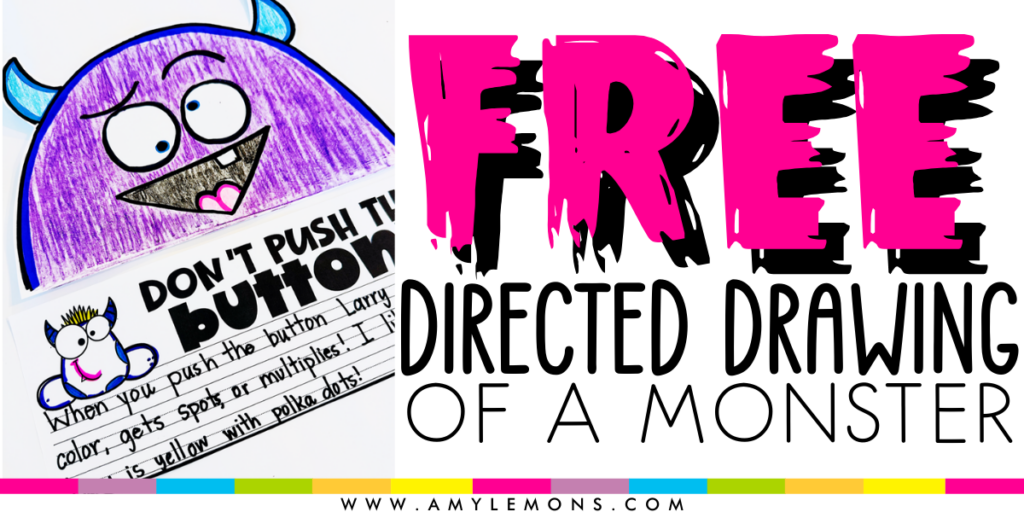
Last week I was able to visit a 1st grade classroom. They use Rooted in Reading in their classroom, so I wanted to bring something new to read. I found the monster book Don’t Push the Button. It is an interactive read-aloud with Larry the monster as the main character. At first he is adamant that the kids DO NOT push the button, but he simply can’t handle the pressure! He has the students press the button throughout the book as he changes colors, multiplies, and more! The students absolutely ADORED this book.
I did make each student their own button using a circle paper cutter. It was an easy way to keep them all engaged while I was reading.
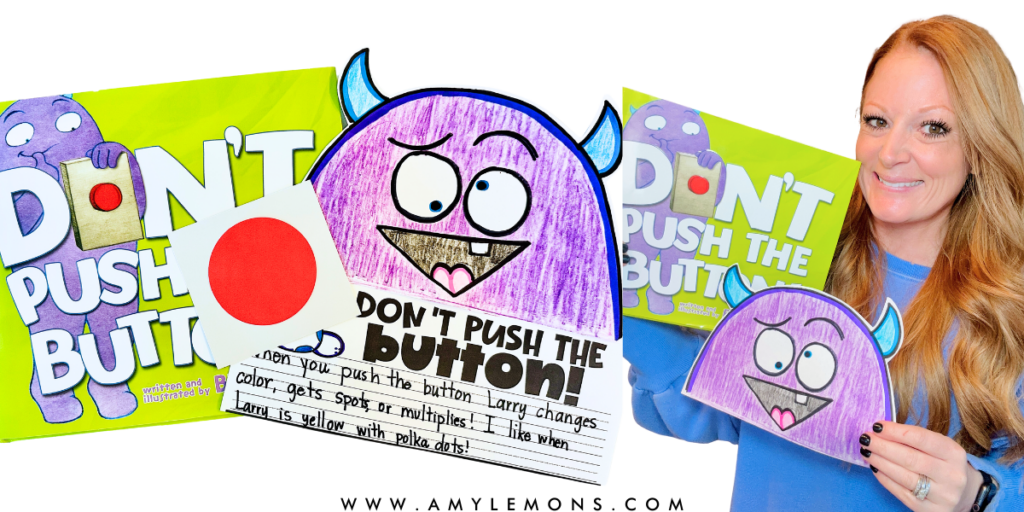
After we read the story, we just had to draw Larry. He’s such a simple yet fun character. You can grab this FREE Monster activity below!
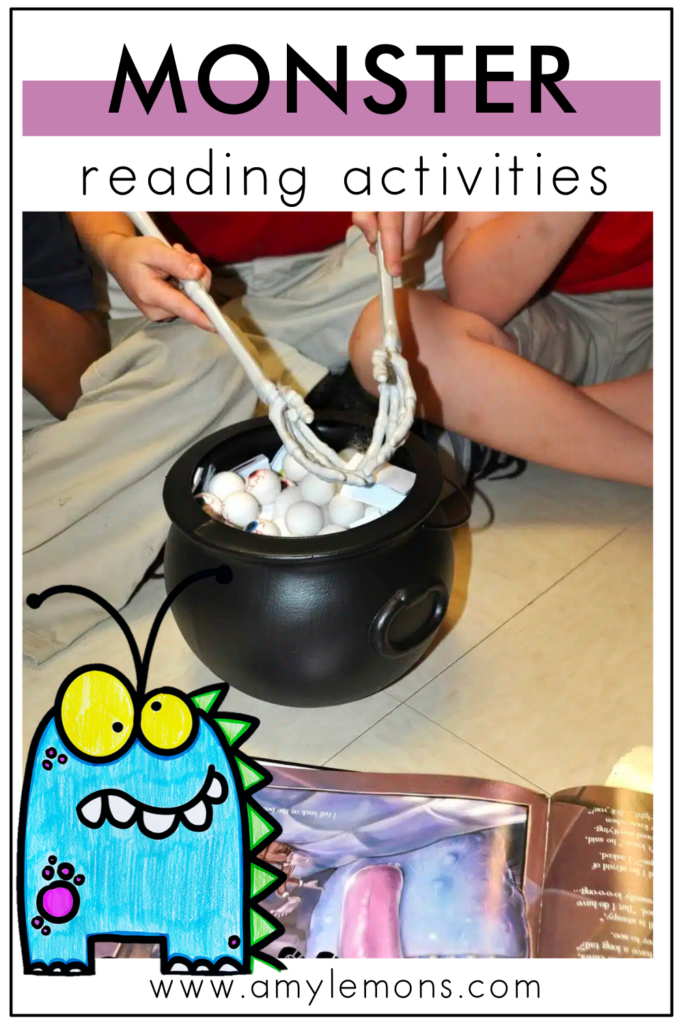

Hey, y’all! My name is Amy Lemons and I am passionate about providing students with both engaging and effective standards-based Math and ELA lessons.
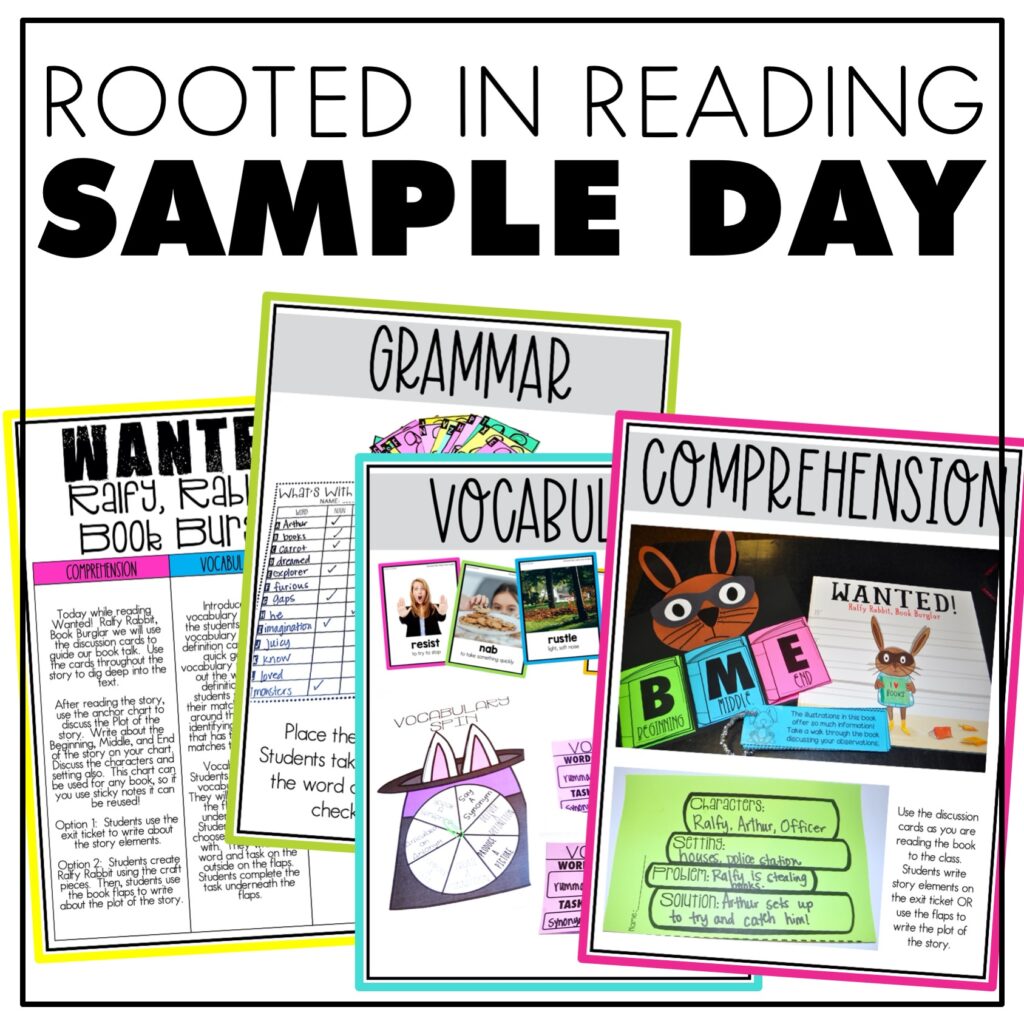
Sample a day of Rooted in Reading with these lesson plans and activities for Reading Comprehension, Vocabulary, and Grammar!


